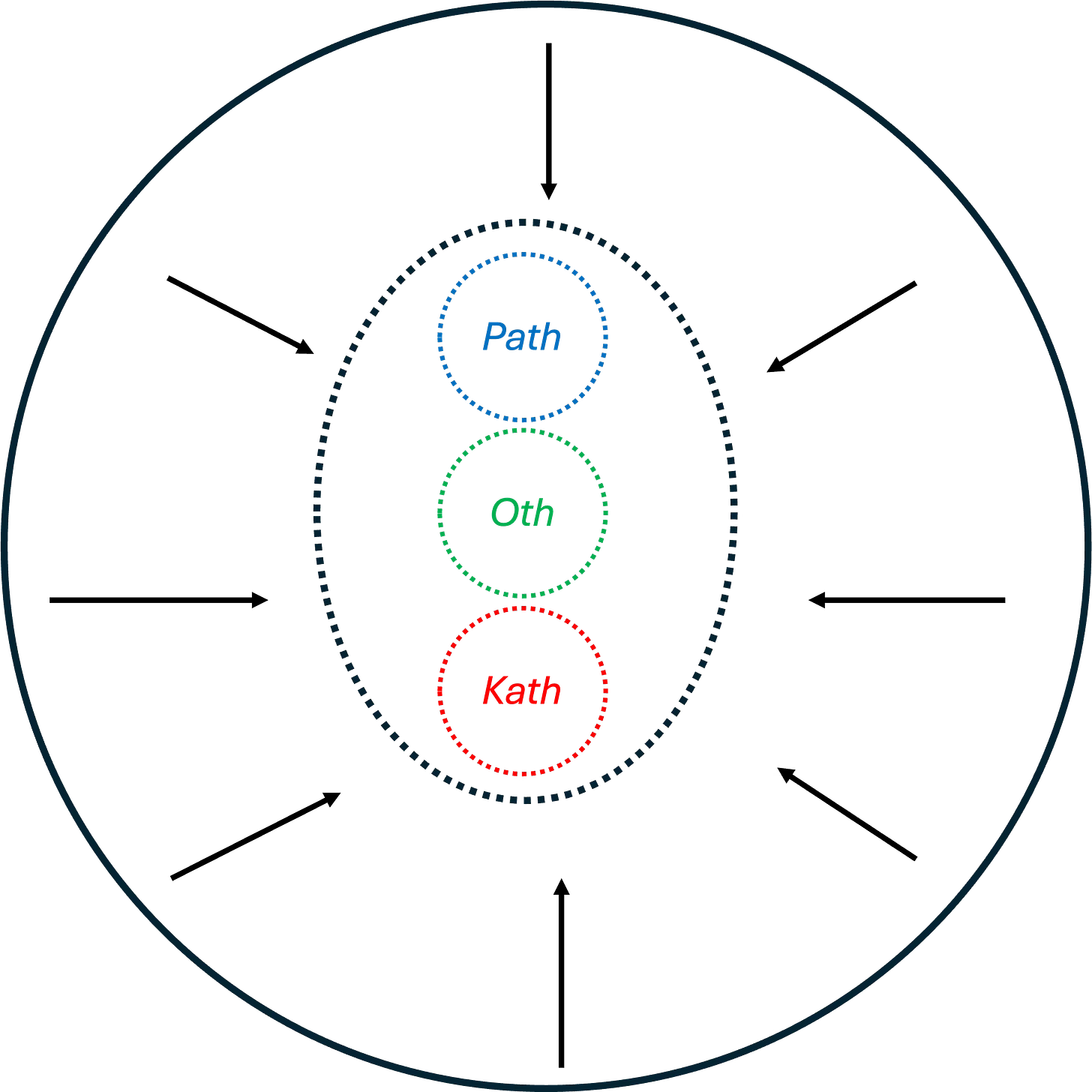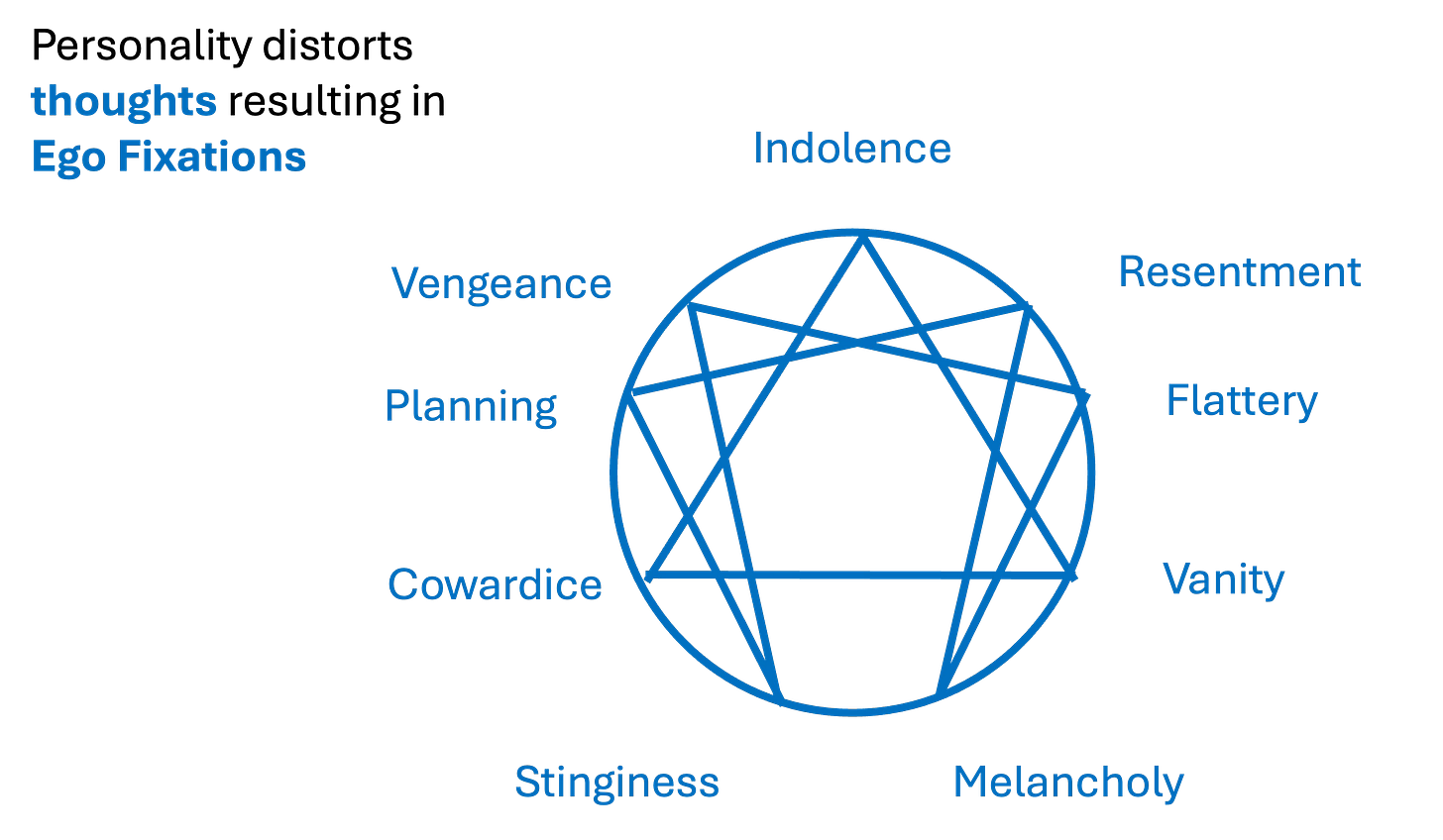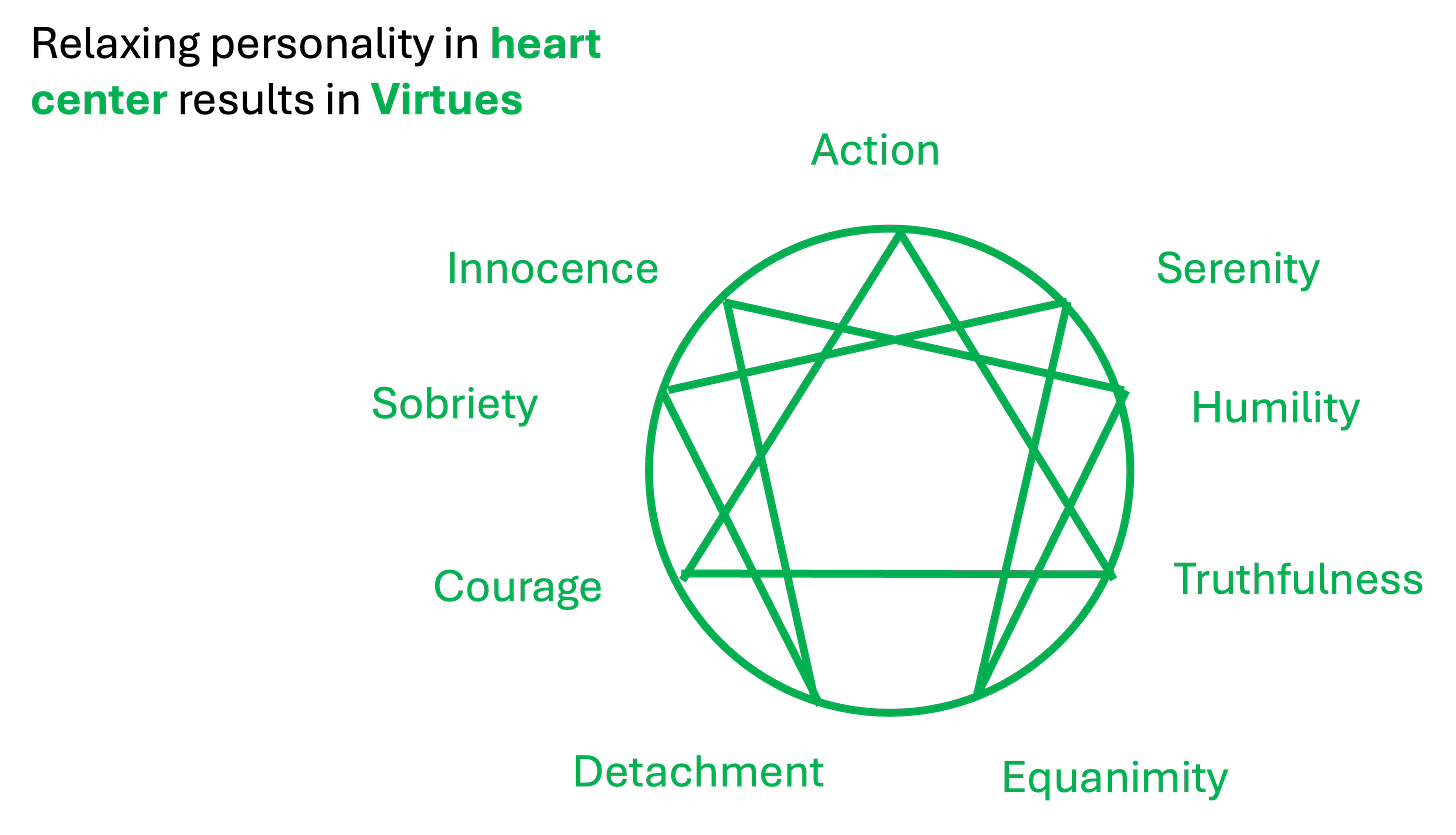Oscar Ichazo (1931 - 2020) was born in Bolivia and was educated in a Jesuit school as a child. As an adult he read and travelled widely in pursuit of spiritual understanding. Like Gurdjieff, Ichazo discovered the enneagram symbol at some point in his journeys and also like Gurdjieff, he found it to be a source of wisdom and knowledge.1
The Enneagram-based system that Ichazo developed and taught over the course of decades included one hundred and eight different enneagram symbols (or “enneagons” as he called them), each one conveying information about different universal processes.2 Seven of these one hundred and eight enneagons categorized people in terms of variations in thoughts, feelings, and behaviors. These seven personality typologies became the foundation of the contemporary Enneagram through the work of Claudio Naranjo, one of Ichazo’s students.3
Ichazo’s Centers Model
Similarly to Gurdjieff’s three-brained body model, Ichazo’s model consists of three centers: the Path (intellectual center) associated with the head region of the body; the Oth (feeling center) associated with the heart region of the body; and the Kath (movement/energy/instinct center) associated with the lower belly region of the body.4
Again similar to Gurdjieff’s model, the lowest center - Gurdjieff’s Movement center and Ichazo’s Kath center – is comprised of three sub-centers. Gurdjieff called these sub-centers the moving center, the instinctive center, and the sexual center. Ichazo called them the social center, the conservation center, and the syntony center.5
The diagram below illustrates my own representation of how Ichazo’s centers model maps onto the contemporary Enneagram symbol. I am not aware of any research indicating that Ichazo mapped his model of the centers onto the Enneagram symbol.
Ichazo’s Theory of Type Development
Ichazo’s model of the human structure consists of three centers which can exist either in a state of essence - the original, pure state a human occupies at birth - or a state of personality - which develops as a protective buffer against painful experiences (Ichazo used the terms “ego” and “personality” interchangeably). According to Ichazo, though the function of the personality is to protect against suffering, the activity of the personality actually causes more suffering by distorting the functions of the three centers. As an adult, a person can learn to relax the personality, thus allowing the centers to act without distortion.
At birth a child is in a state of essence wherein the functioning of the three centers is undistorted.
The child is impacted by environment and begins to develop a personality to protect against painful experiences.
The personality acts as a buffer between the three centers and the external world.
In the process of buffering the external world, the activities of the centers are themselves distorted.
Relaxing the personality allows for a return to a state of essence in which the activities of the centers are no longer distorted.
Ichazo’s Personality Typologies
Ichazo created five personality typologies that categorize differences in thoughts, emotions, and behaviors that arise from the distorting effects of the personality. Additionally, Ichazo created two typologies that categorize differences in thoughts and emotions that occur when the activity of the personality is relaxed. The diagrams below are adapted from Lilly and Hart, 1975.6
Ichazo also created two typologies that categorized thoughts and emotions in a state of a relaxed personality.
Comparing Gurdjieff’s and Ichazo’s Models of the Centers
In Gurdjieff’s model of the centers, movement occurs among the centers as each attempts to avoid carrying out its own functions while at the same time attempting to take on the functions of the other centers. It is this continual jostling movement amongst the centers that creates distortions in experience.
In Ichazo’s model, it is the activity of the unitary personality that distorts each center separately, although Ichazo does nod towards Gurdjieff’s model by noting that the activity of the personality imposes a hierarchy of control amongst the centers, with the head center trying to control both the emotional center and the movement center.7
Conclusion
In addition to creating the seven personality typologies that formed the foundation of the contemporary Enneagram, Ichazo also proposed a theory of personality development in which the personality develops in childhood as a buffer against painful life experiences.
In the next chapter, we will look at what Claudio Naranjo did with the Enneagram typologies and theory that he learned from Ichazo.
F.F. Christlieb, (2016). Where on earth did the Enneagram come from? Lightning Source.
F.F. Christlieb, ibid 1.
C. Naranjo (1994). Character and neurosis: An integrative view. Gateways/IDHB, Inc.
J. C. Lilly and J. E. Hart (1975). “The Arica Training”, in Transpersonal Psychologies, Charles T. Tart, (ed.), Harper & Row, NY, pp 329 - 351.
J. C. Lilly and J. E. Hart, ibid 4.
J. C. Lilly and J. E. Hart, ibid 4.
J. C. Lilly and J. E. Hart, ibid 4.













